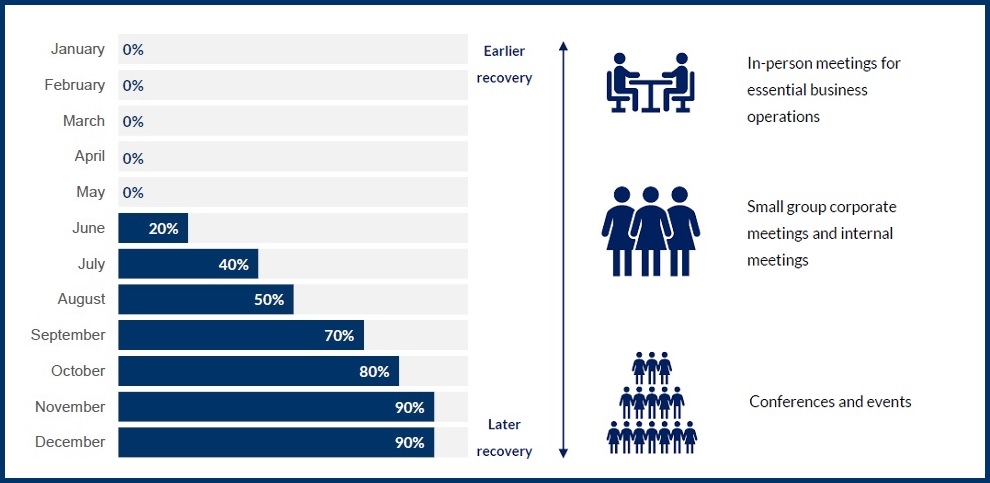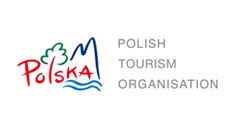Study on impact of coronavirus on European convention sector

Baseline scenario: rapid recovery after removal of restrictions
The baseline scenario assumes that lingering restrictions and negative sentiment effects in 2021 will mean that the recovery will not start in earnest until 2022. The removal of restrictions will then give large corporations and event planners confidence in the future and will allow for some rapid recovery of the sector. Visits are expected to recover by 2024. The scenario also forecasts that different types of events will recover at varying paces, with small domestic-oriented cooperate meetings and events leading the way and almost reaching 2019 levels by the end of 2022.
For large events and conventions significant progress is envisaged within the same period. However, it is not expected that all types of events will have recovered before 2023. Not least the shift to and continued use of hybrid event formats will also mean that average attendance levels for all events will stay below 2019 levels until 2024. Similarly, the average spend per trip will also remain depressed throughout the forecast period, driven by a reduction in the average length of stay per trip and the delayed recovery of international attendees. Overall, the baseline scenario works with the assumption that, although events will return to pre-crisis levels by 2023, the recovery of average attendance will lag behind events by two years.
Upside and downside scenario taking key risks into account
To consider key risks that affect the baseline assumptions, such as the vaccine supply and rollout, the timeframe for exiting the current restrictions and the future behaviour of convention participants, the study also looked at an upside and downside scenario. The former anticipates an early easing of restrictions, a rapid upturn in economic growth, and limited negative sentiment effects.
The downside version forecasts that the continued prevalence and effects of the virus will see some additional restrictions maintained into 2022. This scenario also assumes that the format of conferences and meetings will be different for some years to come, with many events continuing to be either completely virtual or hybrid. Particularly the changes in attendee behaviour around virtual attendance and the continued prominence of hybrid set-ups mean that the road to recovery also comes with the need for the events community to develop appropriate and innovative products that will inspire and engage participants in the future.
The assumptions for the coronavirus impact study were developed in consultation with members of the Strategic Alliance of the National Convention Bureaux of Europe and have incorporated insights from previous modelling and various consumer sentiment surveys. As a network of national destination marketing organisations, aiming at strengthening Europe’s position as a leading destination for international business events, initiatives such as the new report contribute to knowledge transfer and provide the member countries with important insights to develop relevant strategies and services in challenging times. For detailed results, please download the updated “The Impact of Coronavirus on Europe’s Convention Sector”.
About the Strategic Alliance of the National Convention Bureaux of Europe
The Strategic Alliance of the National Convention Bureaux of Europe is a network of national destination marketing organisations. As a collaborative industry platform, it concentrates on strengthening Europe’s position as a leading destination for international business events. The purpose of the Alliance is to create a beneficial working relationship amongst the national convention bureaux of Europe in order to sustain and further develop the position of Europe.
The idea of creating synergies and establishing a joint platform for Europe as a destination for business events on the international stage continues to gain traction: Officially announced at IMEX 2014 in Las Vegas with nine founding countries, the Alliance is now a 28-member strong network that has steadily grown over the past couple of years. Since 2014, the Alliance has met twice a year in rotating host destinations.
www.convention-europe.com



